Malaysian Sea Turtles
Home on The Beaches
The beautiful Malaysian sea turtles have been making their "homes" and birthplace on the pristine, white beaches of the country for centuries.
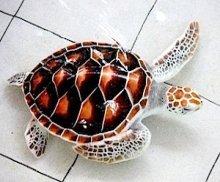 |
It is so because Malaysia has a long coastline, with the western part of Peninsular Malaysia facing the Straits of Malacca, while the coasts of the eastern states of Peninsular Malaysia and Sabah and Sarawak face the waters of the South China Sea.
Throughout the length of the coasts, since time immemorial, the sandy beaches have been used by the various species of turtles for landing and nesting, laying their eggs in the thousands.
The landings and nesting of the sea turtles is said to occur throughout the year at various localities of the Malaysian coastlines.
But the peak months where they come in bigger numbers are from April to September for Peninsular Malaysia and Sarawak, and from August to October in Sabah, before the onset of the torrential rains and rough seas of the monsoon seasons.
Main Types of Malaysian Sea Turtles
The main marine or sea turtles that are found in the seas and coastal areas of Malaysia are:
- Green turtles
- Leatherback turtles
- Hawksbill turtles
- Olive Ridley turtles
Read more on the main sea turtle species of Malaysia here.
While these sea turtles have been regularly coming in past years to the beaches of Malaysia, sadly there is a huge decline in their population and nesting figures especially during the last few decades.
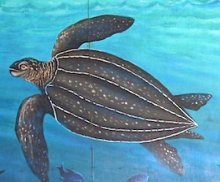 |
Those were the “gala” time for turtle watchers, turtle eggs eaters, and for the resorts catering to visitors for "turtle tourism". The touristic activities that include turtle watching at night and bonfires at the beach, also see visitors and tourists taking fun rides on the back of the big Leatherback turtles, as if the turtles come to let humans have fun on them.
So, with artificial lights, persistent human contact and disturbance during egg-laying, and rubbish pollution of the nesting beaches, plus uncontrolled harvesting of the eggs for consumption, all of these were to adversely affect the future population of the Malaysian sea turtles.
As a consequence, well... “ those were the days, my friend”.
Because as the years go by, less and less Leatherbacks came to the beach at Rantau Abang.
By the 1980's the nesting numbers had dropped to about 3,000 and by year 2000 there were less than 100 nestings recorded there. In fact recent years saw less than 10 nests were recorded, and it is considered that the Leatherback turtles are almost extinct in the South China Sea.
Classified on the IUCN Red List
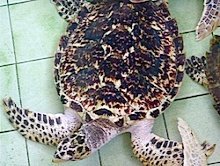 |
But unlike the leatherbacks, there is still hope for the other types of sea turtles like the Green and Hawksbill, if counter-measures are taken quickly to stem their decline.
Protection Measures Required
Appropriate measures must be taken to protect the Malaysian sea turtles, their habitats and the general environment.
Among others, this requires that coastal developments by the authorities are properly planned, taking into consideration their consequential effects on the turtles' habitats.
And to resuscitate a healthy and sustainable population of these turtles, there must be adequate federal and state laws to save and protect sea turtles and their environment, with of course the constant and rigid enforcement of such laws.
Although consumption of turtle eggs has been made illegal since 1989, the egg trade seems to continue for lack of enforcement.
Sea Turtle Sanctuaries and Hatcheries in Malaysia
A hatchery programme for the leatherback began in Malaysia in the 1960s when concerns were first raised about turtle numbers.
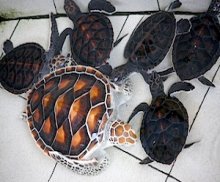 |
It is a small step, but it is hoped that with the establishment of these turtle sanctuaries and hatcheries, together with other appropriate measures, the population of the Malaysian sea turtles will begin to slowly rise again.
In fact the measures taken at the Turtles Islands National Park in Sabah, over many years, have shown very positive results.
Do Our Part to Help Save the Sea Turtles
My friends, do know and understand that these sea turtles of the world, although dwindling in numbers now, through their feeding habits still help keep the world's marine eco-systems in good balance, affording tenable sustenance of our fisheries and underwater-tourism activities.
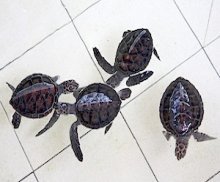 |
What fun is snorkeling and scuba diving without seeing these attractive and beautiful creatures of God swimming nonchalantly around the colorful coral reefs in the depths of the sea?
So help save the marine turtles of the world, and contribute in whatever form and wherever possible, for their conservation.
And enjoy watching the Malaysian sea turtles (while they are still around, of course).
Return here from Malaysian Sea Turtles to Malaysia Wildlife and Nature homepage.
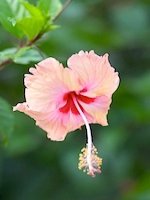 |
Hibiscus
Malaysia's National Flower
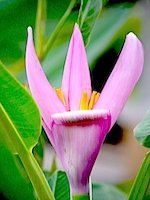 |
Flower of A Banana Plant
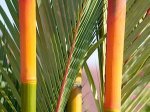 |
|
|
And among His Signs is the creation of the heavens and the earth, and the living creatures that He has scattered through them: and He has Power to gather them together when He wills. There is not an animal (that lives) on the earth, nor a being that flies on its wings, but (forms part of) communities like you. And God has created every animal from water: of them there are some that creep on their bellies; some that walk on two legs; and some that walk on four. God creates what He wills for verily God has power over all things.
|

|








